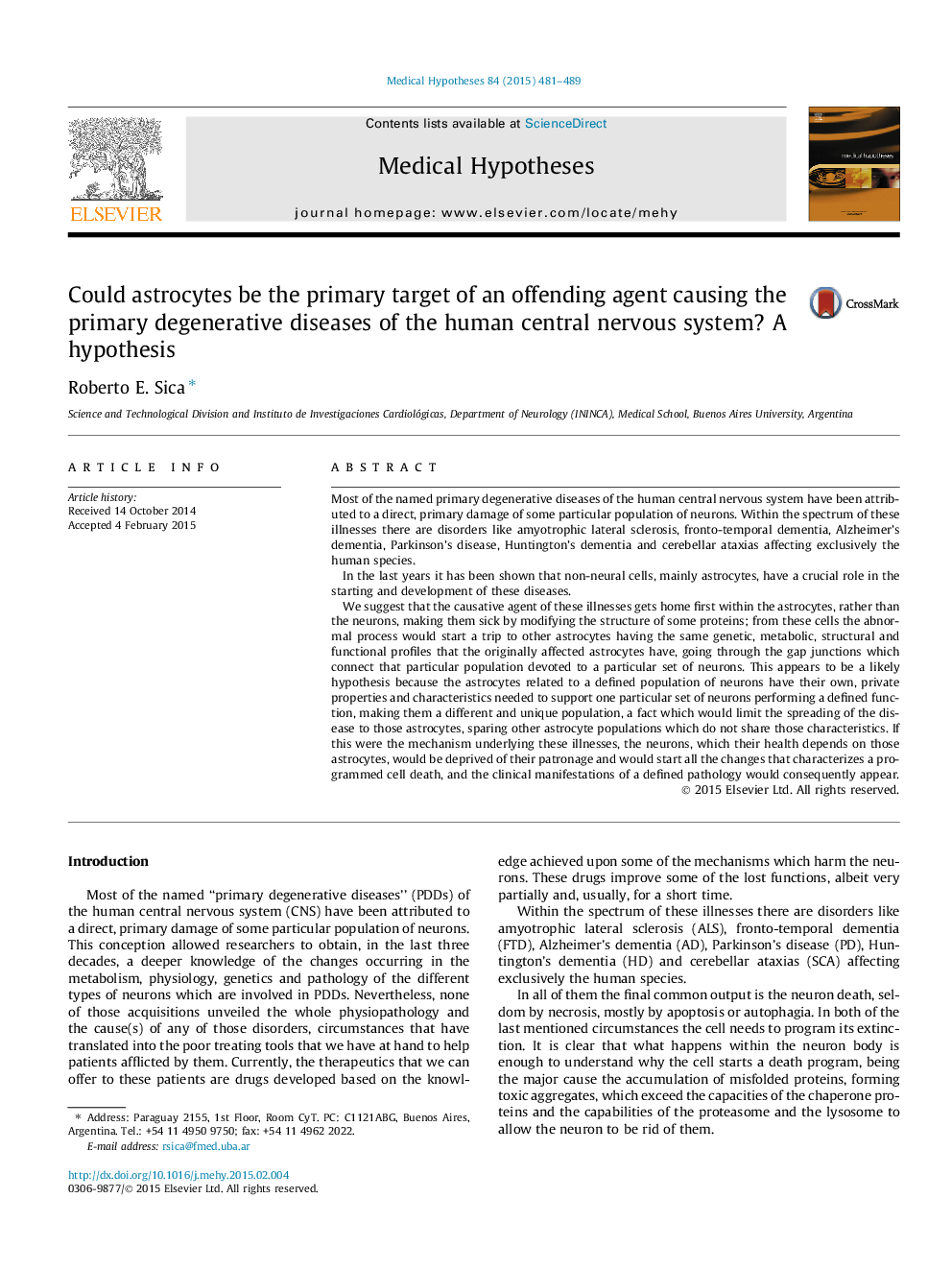| Article ID | Journal | Published Year | Pages | File Type |
|---|---|---|---|---|
| 5811387 | Medical Hypotheses | 2015 | 9 Pages |
Most of the named primary degenerative diseases of the human central nervous system have been attributed to a direct, primary damage of some particular population of neurons. Within the spectrum of these illnesses there are disorders like amyotrophic lateral sclerosis, fronto-temporal dementia, Alzheimer's dementia, Parkinson's disease, Huntington's dementia and cerebellar ataxias affecting exclusively the human species.In the last years it has been shown that non-neural cells, mainly astrocytes, have a crucial role in the starting and development of these diseases.We suggest that the causative agent of these illnesses gets home first within the astrocytes, rather than the neurons, making them sick by modifying the structure of some proteins; from these cells the abnormal process would start a trip to other astrocytes having the same genetic, metabolic, structural and functional profiles that the originally affected astrocytes have, going through the gap junctions which connect that particular population devoted to a particular set of neurons. This appears to be a likely hypothesis because the astrocytes related to a defined population of neurons have their own, private properties and characteristics needed to support one particular set of neurons performing a defined function, making them a different and unique population, a fact which would limit the spreading of the disease to those astrocytes, sparing other astrocyte populations which do not share those characteristics. If this were the mechanism underlying these illnesses, the neurons, which their health depends on those astrocytes, would be deprived of their patronage and would start all the changes that characterizes a programmed cell death, and the clinical manifestations of a defined pathology would consequently appear.
